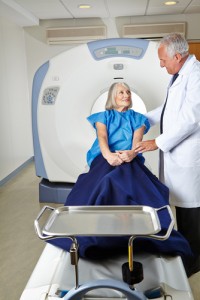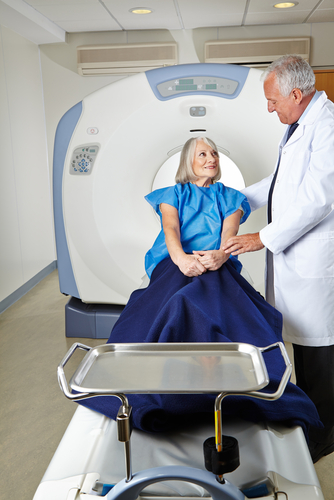 Thomas Jefferson University researchers have developed a prospective trial to assess if radiation therapy with the Active Breathing Coordinator (ABC) could reduce mean heart dose (MHD) and lung incidental radiation in breast cancer patients.
Thomas Jefferson University researchers have developed a prospective trial to assess if radiation therapy with the Active Breathing Coordinator (ABC) could reduce mean heart dose (MHD) and lung incidental radiation in breast cancer patients.
Breast cancer patients undergoing radiation therapy are often exposed to incidental radiation dose to the heart and lung, which can increase the risk for ischemic heart disease (IHD) and lung cancer, especially in women suffering from left-sided breast cancer.
Over the last few years, several techniques have been developed that can minimize radiation exposure to organs considered at risk. One such technique is moderate deep inspiration breath hold (mDIBH) with the Active Breathing Coordinator (ABC) device (Elekta Oncology). The ABC guarantees immobilization of the chest wall through monitorization of a patient’s breathing cycle and can implement a breath hold at a predefined lung volume. This device can optimize the distance between the heart and chest wall, moving the organs at risk out of the radiation field but still permitting correct irradiation of the breast tissue.
[adrotate group=”3″]
In the study, titled “Active Breathing Coordinator reduces radiation dose to the heart and preserves local control in patients with left breast cancer: Report of a prospective trial” and published in Practical Radiation Oncology, the research team used free breathing (FB) and ABC in a total of 86 patients with stages 0-III left breast cancer (LBC). The primary endpoint was the degree of MDH reduction in both ABC and FB, while secondary endpoints were set to dose reduction to the heart and lung, procedural success rate, and adverse events.
The results demonstrated that ABC was able to reduce MHD by 20% or more in the majority (88%) of patients. Additionally, RT with ABC significantly reduced dose to the left lung.
“Radiation therapy with the ABC device may not benefit all patients with LBC as some patients will have minimal heart volume within the tangential fields. In the present study ABC was reserved for patients with greater than 5 cc of heart within the tangential fields based on visual estimates, but alternative methods may select patients who would benefit from mDIBH in a more consistent manner such as rapid automated planning,” the authors write in their study. However, the results from this study are encouraging and the authors believe the “use of the ABC device during RT should be considered to reduce the risk of ischemic heart disease in populations at risk”.

